Male pattern baldness, also known as androgenetic alopecia, is when men gradually lose their hair. It could result in a receding hairline or a bald spot on top of the head.
If you’ve looked into hair loss treatments, you’ve likely come across minoxidil tablets. It is a medication that stimulates hair growth and prevents hair loss. It is available as a generic medication or under the brand name Rogaine.
Like other hair loss treatments, minoxidil begins working right away in your body. However, it can take several months before the effects become noticeable.
This article explores minoxidil and its effectiveness as a treatment for male pattern baldness. It also talks about how long it takes for minoxidil to work and other options you may want to explore if you’re experiencing hair loss.
Contents
How Long Does It Take for Minoxidil To Work?
The effectiveness of minoxidil varies from person to person. You can expect to see some positive changes after two to four months of using it. However, significant improvements may take up to a year of consistent use.
Minoxidil starts to take effect within 4-8 weeks, but visible results may not appear immediately. You may need to use it consistently for 4-6 months before observing significant improvements in hair growth.
Minoxidil has a rapid absorption rate and begins to work almost immediately. It enhances blood flow to the scalp and promotes the natural hair growth cycle. But visible results won’t appear within a few days of using minoxidil.
Even though minoxidil works fast, it takes time for your hair to shift from the telogen phase to the anagen phase of the growth cycle. Additionally, hair growth itself takes time – an average of one inch per month. Therefore, you may have to wait a few months after your hair enters the anagen phase before noticing any improvements in growth or coverage.
When you begin using minoxidil, you may experience a temporary increase in hair shedding. It usually occurs during the first six weeks of treatment. This shedding is normal and is followed by the growth of thicker and stronger hair. If you discontinue using minoxidil, any regrowth of hair you achieved will disappear, and hair loss will resume.
How Does Minoxidil Work?
Minoxidil works in several ways. It first promotes hair growth by stimulating the “anagen” phase, or the active growth phase, of the hair growth cycle.
Secondly, it acts as a vasodilator. It improves blood flow to the scalp. This means delivering more nutrients to hair follicles to promote consistent hair growth.
How Does Minoxidil Affect Hair Growth Cycle?
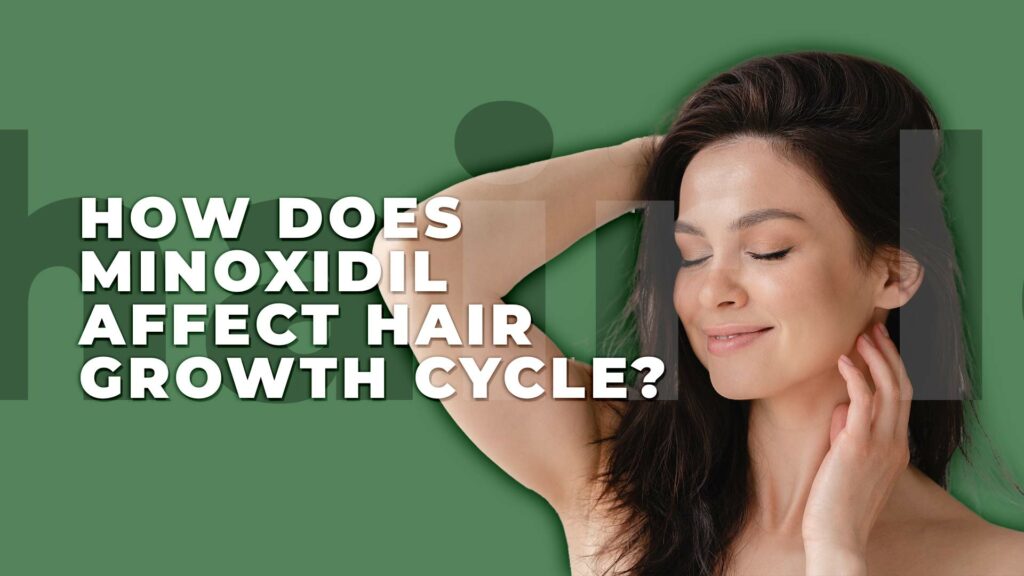
Hair follicles have their own growth cycle. Hair loss happens when the anagen phase shortens and follicles produce thinner, shorter hair. This can be caused by various factors, including genetics, hormonal changes, and aging.
Minoxidil reverses hair loss by prolonging the anagen phase and stimulating the hair follicles. This produces thicker, longer hair fibers. It widens the blood vessels in the scalp, which allows more oxygen, blood, and nutrients to reach the hair follicles. This increased blood flow can also help to remove DHT (dihydrotestosterone). It is a hormone that can cause hair follicles to shrink and eventually stop producing hair.
How Effective Is Minoxidil?
Minoxidil is available in various forms, including topical foam, liquid, and oral pills. It has two strengths: 2% and 5%. The 2% strength is approved for women, while both strengths are approved for men in liquid form.
Topical minoxidil is an effective treatment for androgenetic alopecia and alopecia areata. Clinical studies have shown minoxidil foam or liquid can significantly help hair regrowth than a placebo. For men with androgenetic alopecia, the 5% minoxidil solution has been found to promote 45% more hair growth after 11 months compared to the 2% solution.
Oral minoxidil is FDA-approved for men with alopecia, but some healthcare providers may use it off-label for women. Research shows that oral minoxidil works as well as the topical version for hair regrowth. However, there is a higher chance of side effects like extra hair on the face and body. A study found that one in 20 women stopped treatment due to excessive unwanted hair growth.
Minoxidil And Hair Loss
The most common reason why men lose their hair is male pattern baldness. This happens because of a hormone named dihydrotestosterone (DHT). DHT attaches to receptors in the scalp and causes miniaturization of the hair follicles. This miniaturization shortens the anagen phase. This causes hair to grow improperly and leads to a receding hairline and bald patches. Other types of hair loss include telogen effluvium, traction alopecia, and fungal scalp infections.
Minoxidil can prevent hair loss, reduce its severity, and promote regrowth in affected scalp areas. It works by shortening the telogen phase of the hair growth cycle. This allows each hair follicle to spend less time in a resting state and more time growing.
Minoxidil also stimulates the blood vessels in the scalp. This helps blood flow and gives hair follicles the nutrients they need to work well. However, these effects only occur while using minoxidil and hair loss may resume if the treatment is stopped.
How To Get Best Results From Minoxidil?
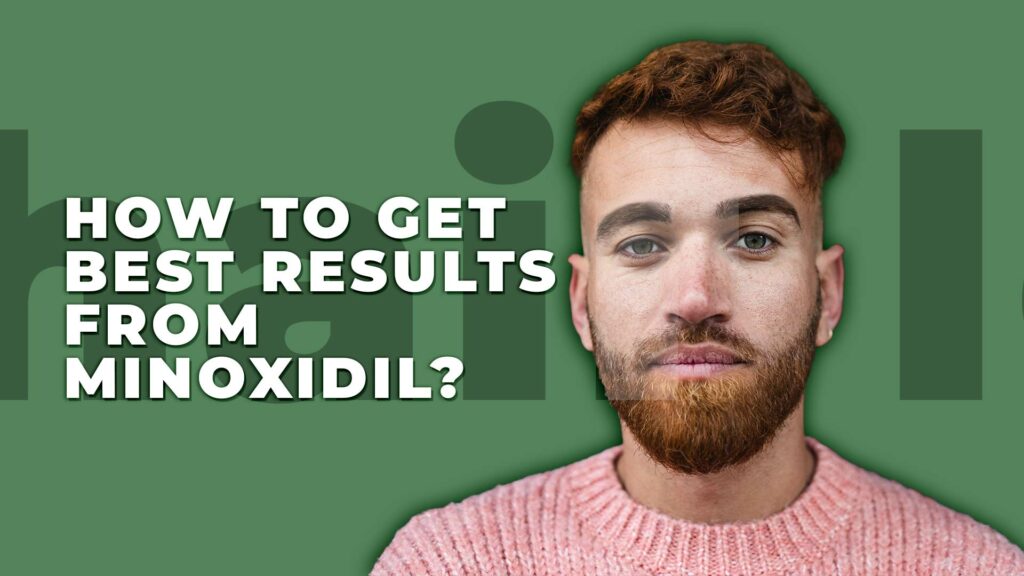
There are several steps you can take to maximize the benefits of minoxidil:
- Begin using minoxidil as soon as possible after noticing signs of hair loss. Treatments tend to be most effective when started early.
- Apply minoxidil correctly and consistently. Use the right amount and apply it to your entire scalp.
- Maintain regular use of minoxidil to sustain the results.
- For better results combine minoxidil with oral finasteride. Finasteride can block the production of DHT, to enhance the effectiveness of treatment.
- Alternatively, use a topical medication that contains both minoxidil and finasteride.
- Avoid habits that can damage your hair. These include tight hairstyles, excessive brushing, smoking, and exposure to excessive UV radiation.
- Follow a diet that supports hair health, as certain nutrients can affect hair growth and condition.
Who Should Not Use Minoxidil?
Consult a doctor before using minoxidil if you are under 18 years old and have any of the following conditions:
- Experience sudden hair loss in patches or unexplained hair loss.
- Experience hair loss after giving birth.
- Have a scalp that is discolored, itchy, infected, or painful.
- Use hair products, chemicals, or hair grooming methods that cause hair loss.
- Have a medical condition that may cause hair loss. These conditions could include thyroid disease or alopecia areata, nutritional deficiencies, scarring of the scalp, or taking medications like chemotherapy.
- Are pregnant, planning to become pregnant, or currently breastfeeding.
While minoxidil is approved by the FDA to treat male and female pattern baldness, it is not approved for other types of hair loss. However, your doctor may recommend it for off-label use.
If you have heart disease, it’s important to talk to your doctor before using minoxidil.
Takeaway

While minoxidil is not a quick fix for hair loss, research suggests that it is effective. It typically takes about four months for new hair to appear, with more significant results after one year of consistent use. Be patient and do not expect overnight results.
Instead, focus on applying minoxidil twice a day and avoid obsessively checking for new hairs. Check your scalp every month or two to monitor your progress. Over time, you might see more hair growth. It can make your crown thicker, hairline stronger, and head fuller in a year.
References
- Badri T, Nessel TA, Kumar D D. Minoxidil. [Updated 2023 Feb 21]. In: StatPearls [Internet]. Treasure Island (FL): StatPearls Publishing; 2023 Jan-. Available from: https://www.ncbi.nlm.nih.gov/books/NBK482378/
- A multicenter, randomized, placebo-controlled, double-blind clinical trial of a novel formulation of 5% minoxidil topical foam versus placebo in the treatment of androgenetic alopecia in men.https://doi.org/10.1016/j.jaad.2007.04.012
- Rossi A, Cantisani C, Melis L, Iorio A, Scali E, Calvieri S. Minoxidil use in dermatology, side effects and recent patents. Recent Pat Inflamm Allergy Drug Discov. 2012 May;6(2):130-6. http://dx.doi.org/10.2174/187221312800166859
- Olsen, E. A., Dunlap, F. E., Funicella, T., et al. (2002). A randomized clinical trial of 5% topical minoxidil versus 2% topical minoxidil and placebo in the treatment of androgenetic alopecia in men. Journal of the American Academy of Dermatology, 47(3), 377–385. Retrieved from https://www.ncbi.nlm.nih.gov/pubmed/12196747
- Olsen, E. A., Whiting, D., Bergfeld, W., et al. (2007). A multicenter, randomized, placebo-controlled, double-blind clinical trial of a novel formulation of 5% minoxidil topical foam versus placebo in the treatment of androgenetic alopecia in men. Journal of the American Academy of Dermatology, 57(5), 767–774. doi:10.1016/j.jaad.2007.04.012. Retrieved from https://pubmed.ncbi.nlm.nih.gov/17761356/
- Beach, R.A. (2018), Case series of oral minoxidil for androgenetic and traction alopecia: Tolerability & the five C’s of oral therapy. Dermatologic Therapy, 31: e12707. https://doi.org/10.1111/dth.12707
- Minoxidil 1 mg oral versus minoxidil 5% topical solution for the treatment of female-pattern hair loss: A randomized clinical trial
- Ramos, Paulo Müller et al. https://doi.org/10.1016/j.jaad.2019.08.060
- Safety of low-dose oral minoxidil for hair loss: A multicenter study of 1404 patients
- Vañó-Galván, Sergio et al.https://doi.org/10.1016/j.jaad.2021.02.054
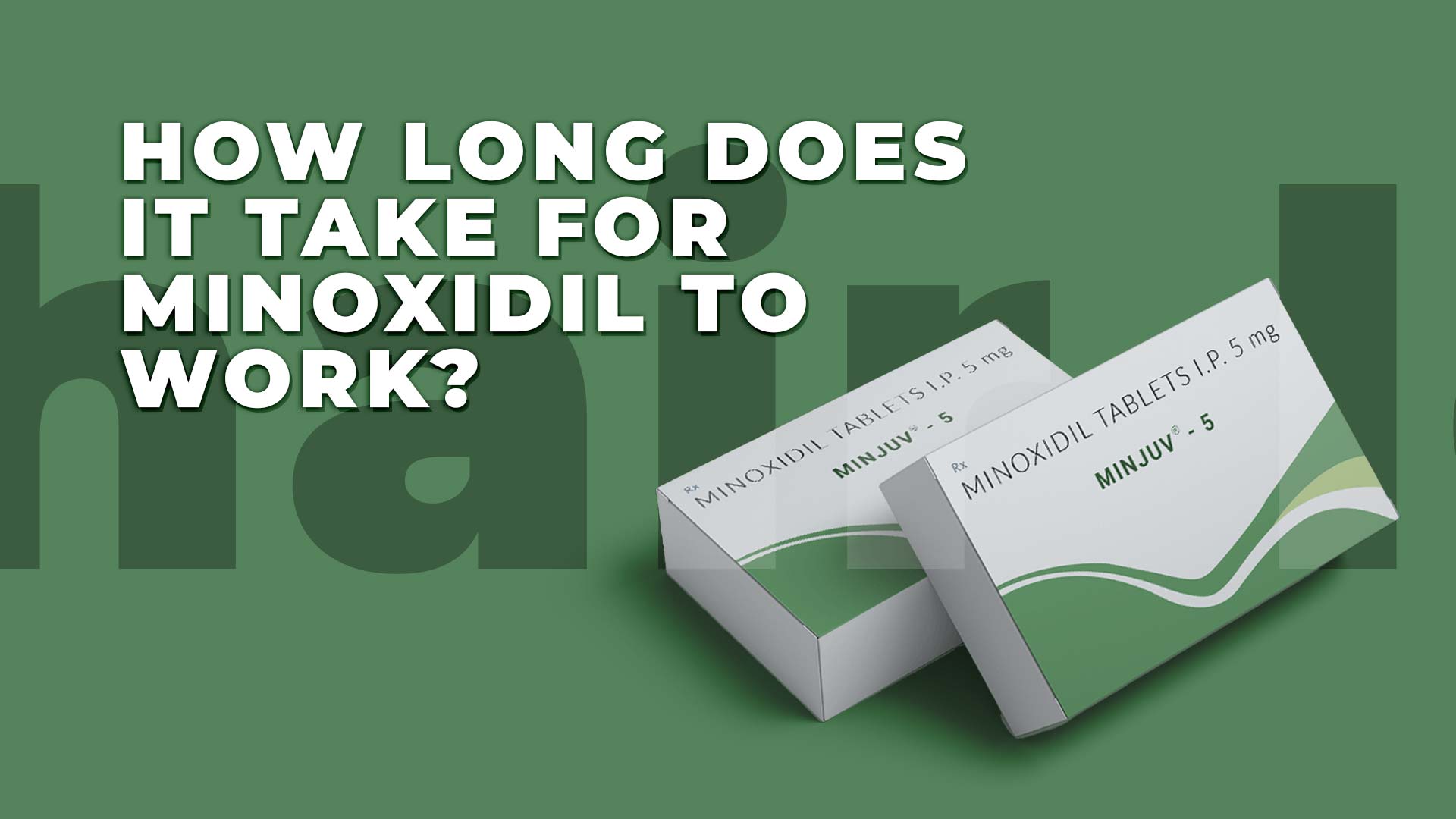
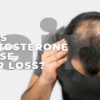



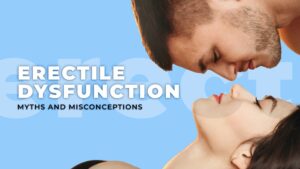
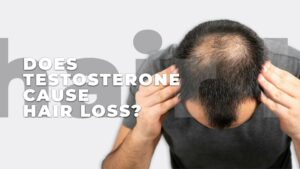
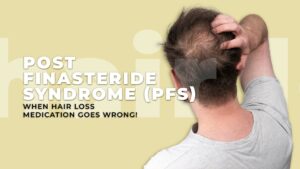


Leave a reply